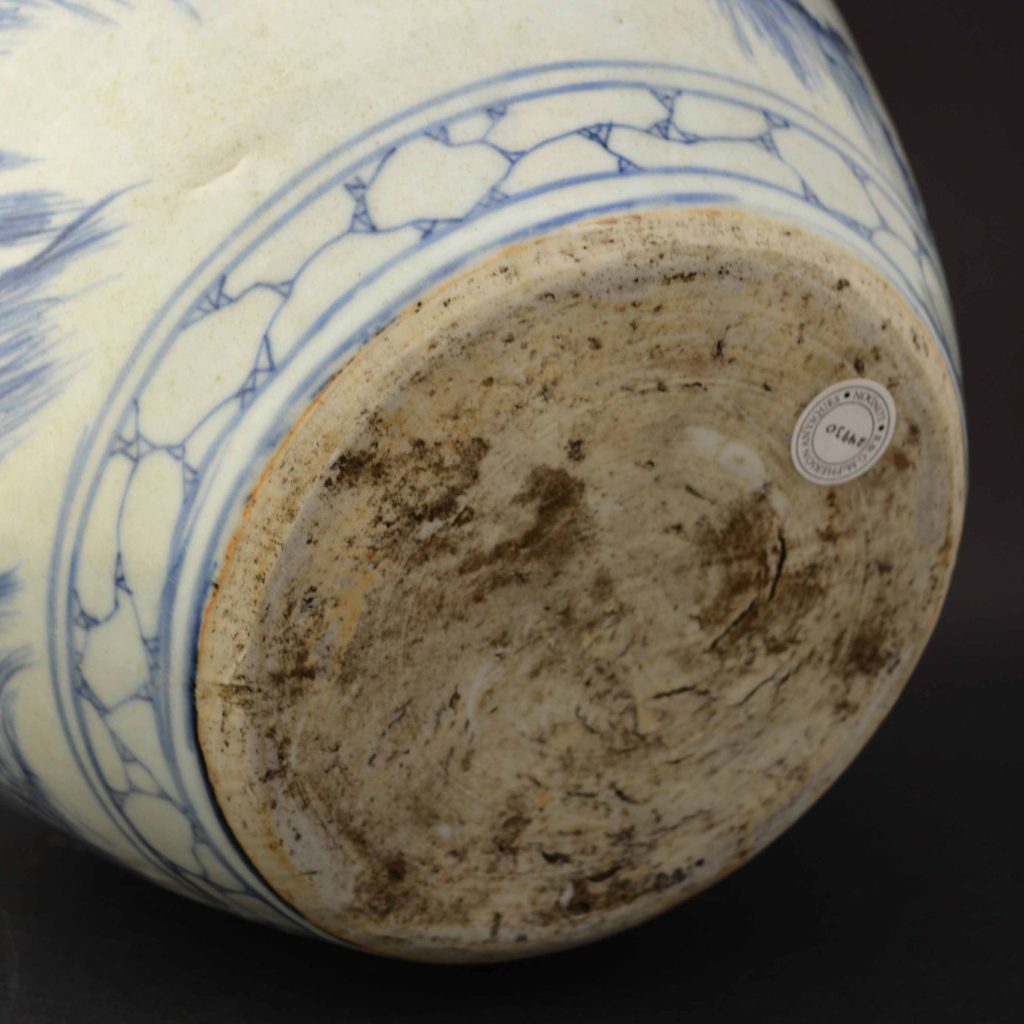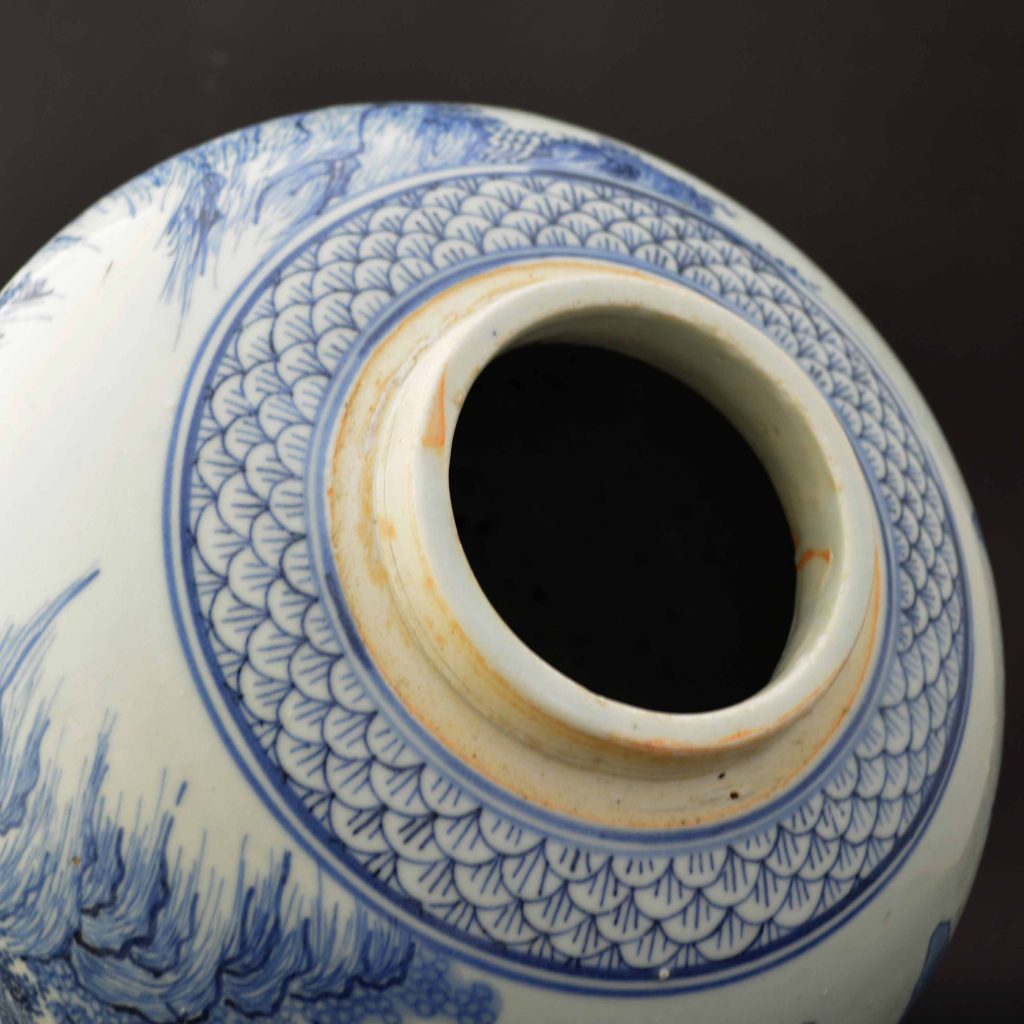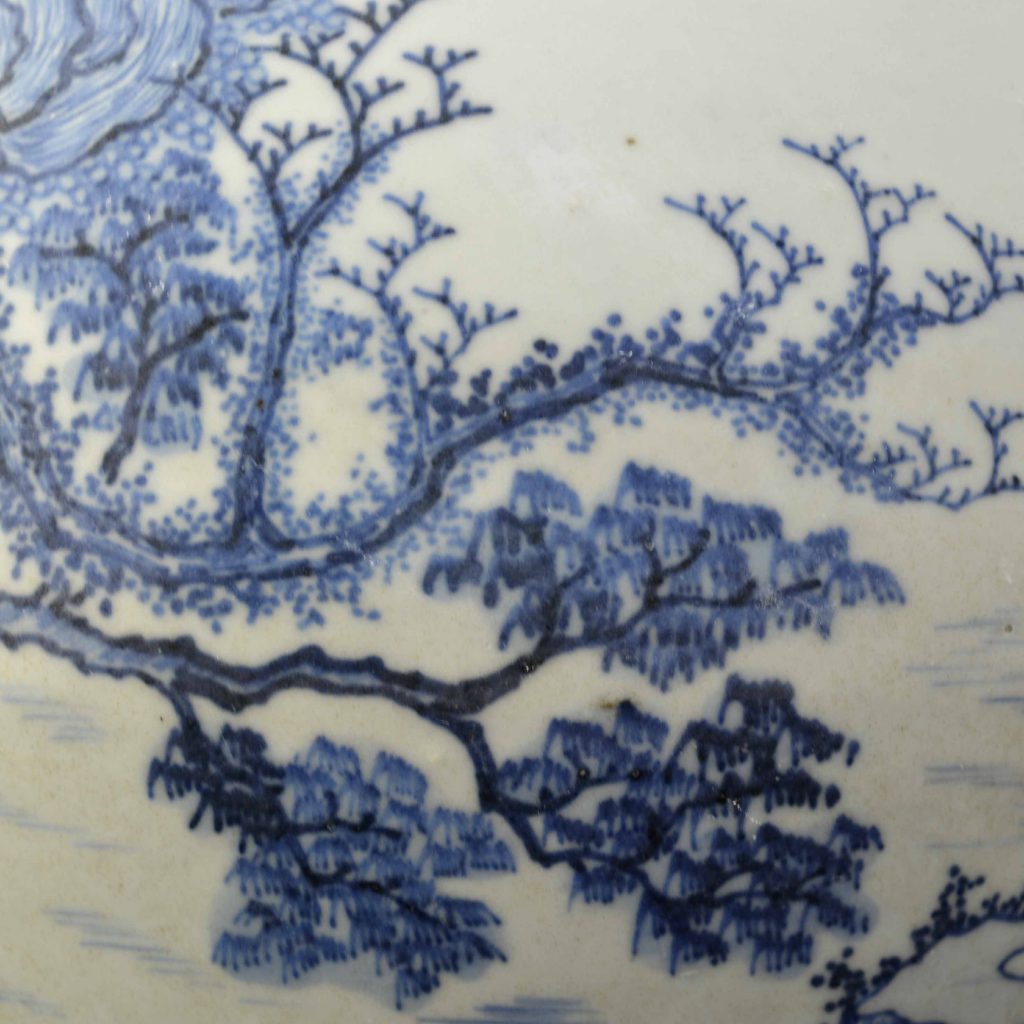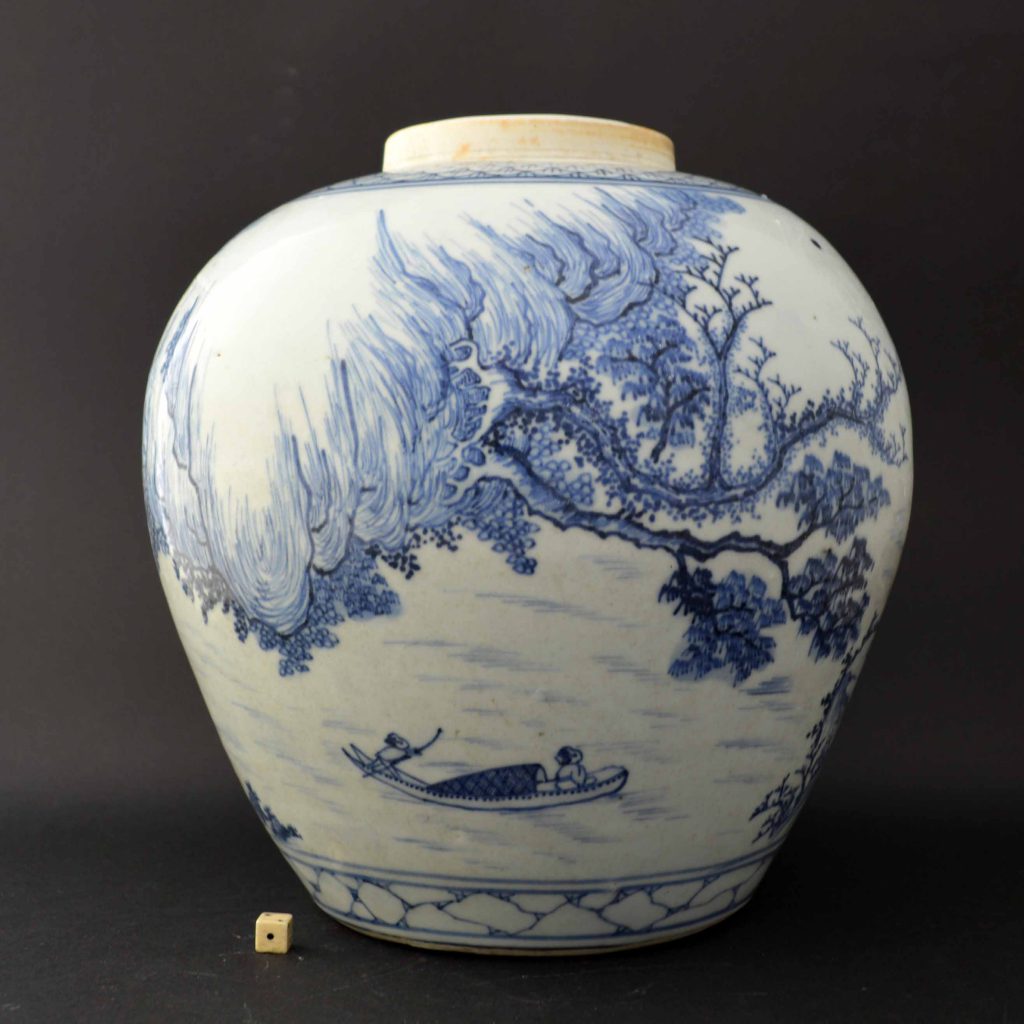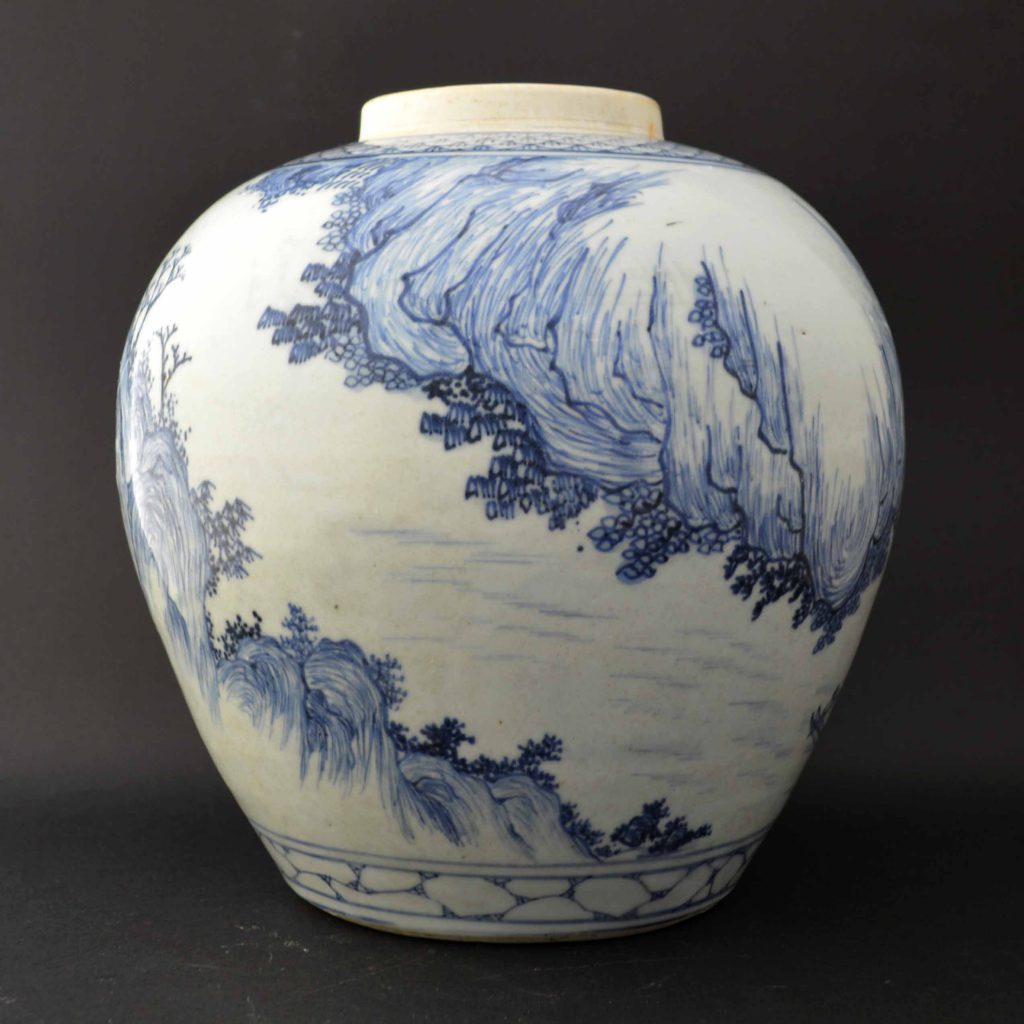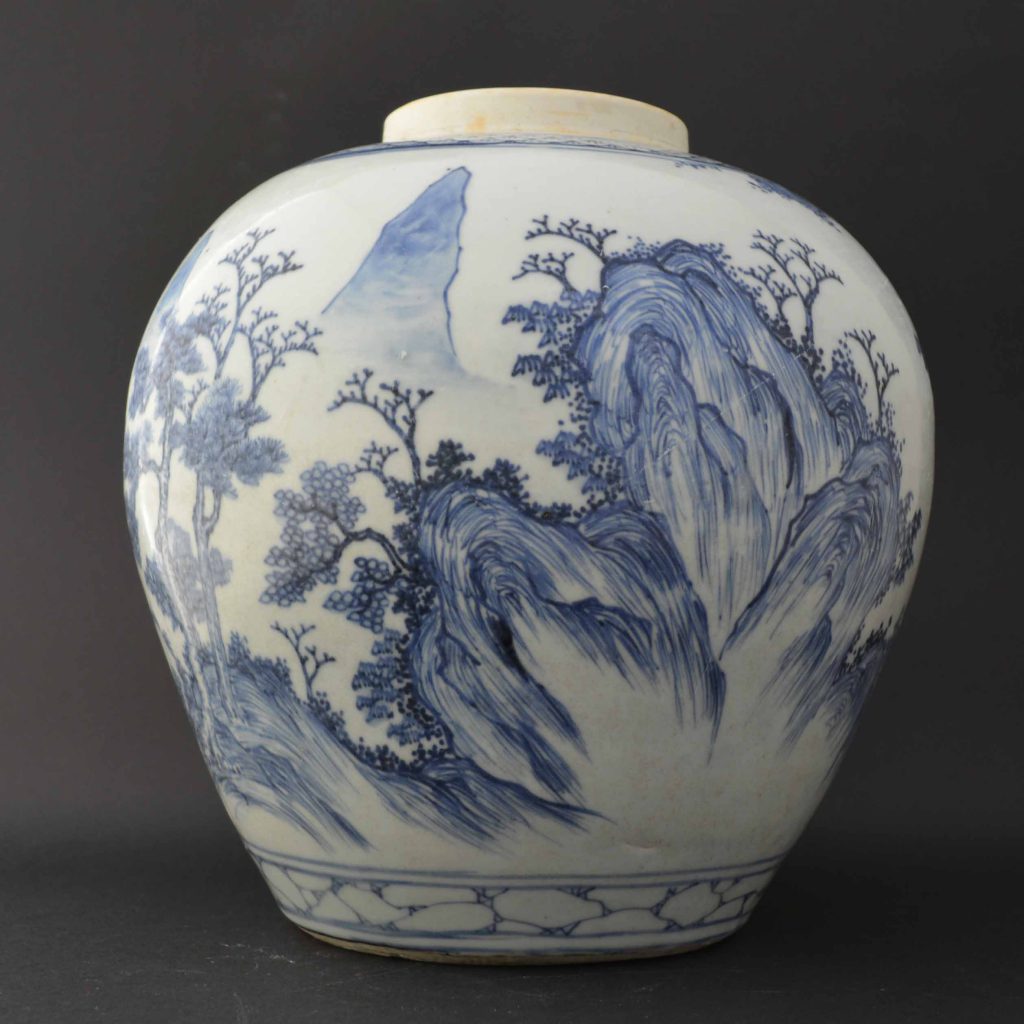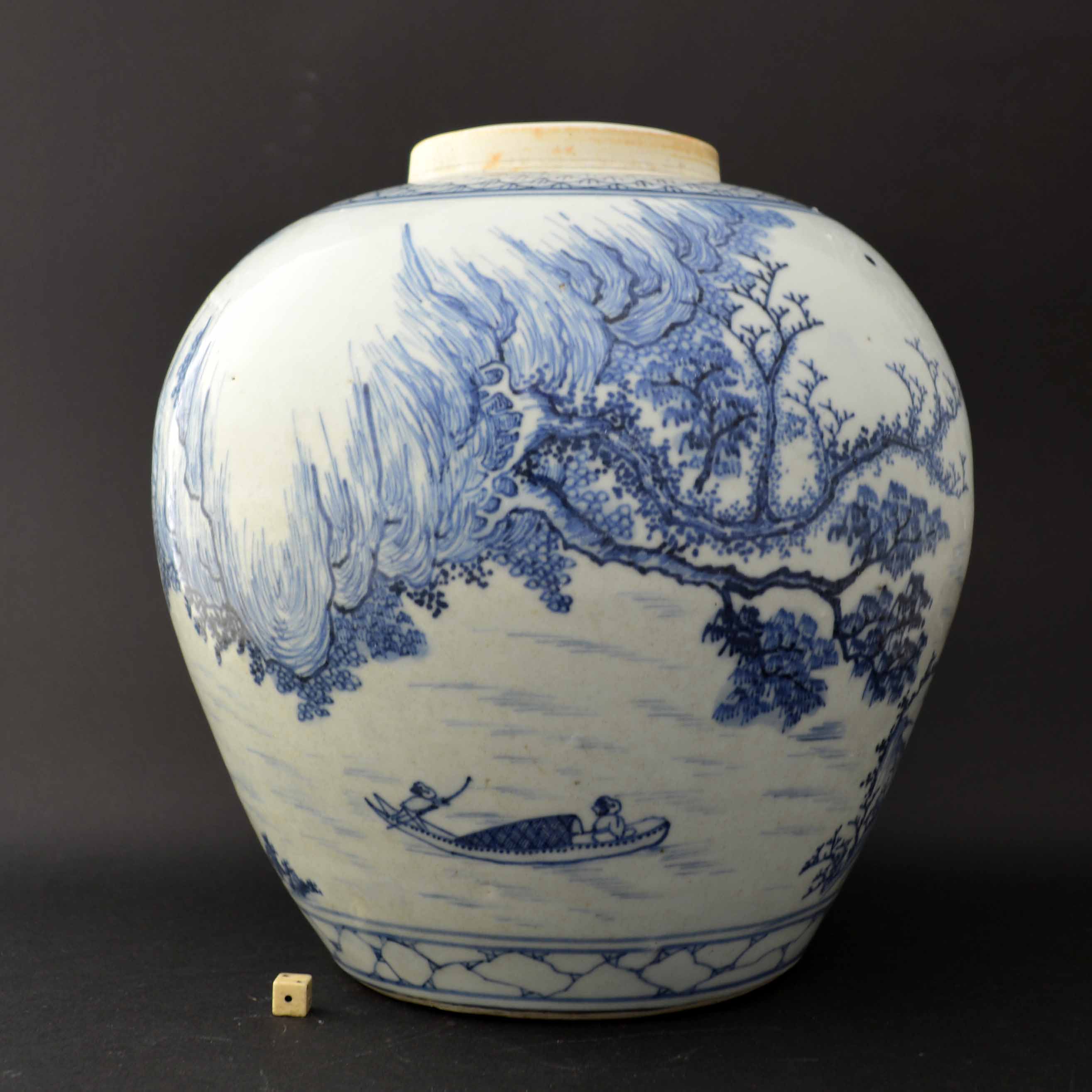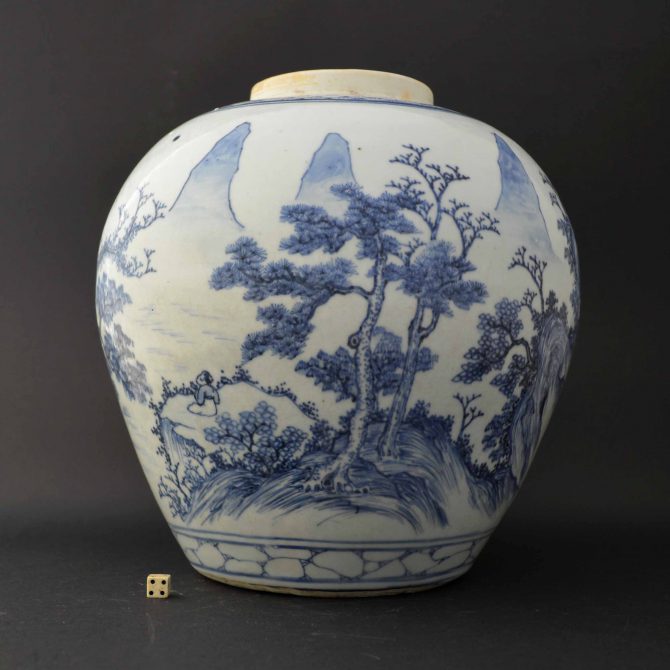
A Rare Early Kangxi Porcelain Jar in the ‘Master of the Rocks’ Style c.1670
A rare early Kangxi Blue and White porcelain jar in the ‘Master of the Rocks’ style with a scene based on ‘Ode to the Red Cliff‘ by Su Shi in 1082. This Kangxi jar dates to c.1670.
SOLD
- Condition
- In excellent condition, some very minor fritting to the inside of the rim, there is minute black flecks in the glass in places, this is probably fine dust from the kiln. Some wear to the glaze in places.
- Size
- Height : 22.8 cm (9 inches)
- Provenance
- From a European Private Collection.
- Stock number
- 24930
Information
The Master of the Rocks Style :
The phrase Master of the Rocks is unfamiliar to many Chinese, it is another invented category used by western scholars and collectors to pigeon-hole groups of Chinese ceramics, rather like Kraakware or Celadon. However unlike either of these Master of the Rocks first coined by Gerald Reitlinger, is a clear, distinct group. This style lasted from about 1645 to 1690. The highly distinctive painting style consists of landscapes with massive powerful mountains in a linier technique. The style is, for want of a better word, ‘painterly’ and often includes distant mountains painted with a very wet brush that contrast with the linier mountains in the mid ground. The style usually employs a technique of blobby dots, either in the landscape or as a border. These dots are painted with a wet brush and have no outline. These designs were certainly inspired by late Ming scroll painters like Wang Jinazhng (active c.1628 – 1644). The same use of brush strokes in contour like parallels lines can be seen. Mountains with jagged peaks are piled up creating a dramatic structure. But where as many of the scroll painters are known, the ceramics artists are anonymous.
Ode to the Red Cliff :
`Ode to the Red Cliff` was written by Su Shi (1037 -1101) in 1082. It is a mournful atmospheric poem of a moon lit boating party where sad music was played on a bamboo flute, songs were song, wine was drunk while "We let our small boat drift freely like a reed and rode along the expanse of the unknown". Thoughts change to the famous battle `Battle of Red Cliffs`, life and war are meditated upon "Riding a small boat, We raise gourd cups to toast each other. We are like a speck of grain in the sea Or mayflies between heaven and earth". The `Battle of Red Cliffs` was part of the wars of the Three Kingdoms. The Battle of Red Cliffs, otherwise known as the Battle of Chibi, was a decisive battle at the end of the Han Dynasty, immediately prior to the Three Kingdoms period. It was fought in the winter of 208/9 A.D. between the allied forces of the southern warlords Liu Bei and Sun Quan and the numerically superior forces of the northern warlord Cao Cao. Su Shi (also known as Su Dongpo) was one of the leading figures of the Song dynasty. Renowned for his poetry, essays, painting, and calligraphy, Su Shi was a highly controversial persona within the political arena. After passing the civil service exams, he entered the literati circle and embarked on a career in the bureaucracy. Su Shi opposed Wang Anshi and his policies, and was banished twice for his opposition. During his exiles, Su Shi composed some of his most famous works, many of which were informed by Confucian, Buddhist, and Daoist philosophies. Su Shi employed political satire and wit, but also had a somewhat romantic view of nature. Su Shi espoused the view that one should live life to the fullest, and much of his writing and art was emotional. After he died during his (second) return from exile, his work was temporarily banned; later writers and critics would recognized Su Shi as one of the preeminent writers in Chinese history.
The other side of the present jar showing the boating party.
Kangxi c.1670.
A Kangxi vase of the 1690's decorated with 'Ode to the Red Cliff' by Su Shi in 1082.
Sold
